Self-Help Advice That Works
We sifted through recent life-improvement books and found the can-do strategies to help you become more successful, calmer, happier, more focused and more connected to others—and to yourself.
By Leigh Newman

What You Want: To strengthen your willpower.
What to Try: Daily training, writes psychotherapist Piero Ferrucci in his new book Your Inner Will: Finding Personal Strength in Critical Times, beginning with the following question: "Are the events of my life the result of forces over which I have no say, or can I in some way mold my existence?" The belief that you can control and improve your life, he argues, is a function of willpower—and willpower can be developed. To start, Ferrucci suggests, write down a list of small acts that require effort and concentration and that you can complete in 24-hour period. For example: not watching television, eating junk food or reading the gossip sites online. Or: making a tricky phone call, chewing your food properly or going to bed a half hour earlier. No matter how long the list is, chose two or three acts to accomplish the following day. Sure, quitting TV or the gossip blogs for a night doesn't mean that you've quit them for the rest of your life. But the point of the exercise isn't to eliminate all your bad habits in one sitting, it's to give your willpower a workout—and provide yourself with a few very noticeable examples of your own strength, which will then inspire you to try again harder the next day.
What to Try: Daily training, writes psychotherapist Piero Ferrucci in his new book Your Inner Will: Finding Personal Strength in Critical Times, beginning with the following question: "Are the events of my life the result of forces over which I have no say, or can I in some way mold my existence?" The belief that you can control and improve your life, he argues, is a function of willpower—and willpower can be developed. To start, Ferrucci suggests, write down a list of small acts that require effort and concentration and that you can complete in 24-hour period. For example: not watching television, eating junk food or reading the gossip sites online. Or: making a tricky phone call, chewing your food properly or going to bed a half hour earlier. No matter how long the list is, chose two or three acts to accomplish the following day. Sure, quitting TV or the gossip blogs for a night doesn't mean that you've quit them for the rest of your life. But the point of the exercise isn't to eliminate all your bad habits in one sitting, it's to give your willpower a workout—and provide yourself with a few very noticeable examples of your own strength, which will then inspire you to try again harder the next day.

What You Want: To learn from constructive criticism (instead of just getting upset).
What to Try: A change in vocabulary. Back when the founder of Virgin Atlantic, Richard Branson, was just starting out in the airline business he used to cold call passengers who had just arrived at Heathrow on a Virgin airplane and say, "this is Richard Branson, I'm just calling to welcome you to England and ask if everything went well on the flight." Whatever the passenger went on to say about his company—be it a complaint or a hymn of praise—Branson identified it as an "observation." That decision, he writes in his new book The Virgin Way: Everything I Know About Leadership, allowed him to take the comments of the passenger less personally and actually hear the information the speaker was trying to communicate. Our take? The technique can be applied to more than customer relations. Imagine your teenage daughter comments on your not having done the laundry last night. If you take it as a complaint, you're bound to feel guilt, resentment and not a little rage, since she's 14 and can operate a washer/dryer. If you take it as an observation, then it's a little simpler. You did not do the laundry. And you can decide to do it tonight—or you can remind her that she could.
What to Try: A change in vocabulary. Back when the founder of Virgin Atlantic, Richard Branson, was just starting out in the airline business he used to cold call passengers who had just arrived at Heathrow on a Virgin airplane and say, "this is Richard Branson, I'm just calling to welcome you to England and ask if everything went well on the flight." Whatever the passenger went on to say about his company—be it a complaint or a hymn of praise—Branson identified it as an "observation." That decision, he writes in his new book The Virgin Way: Everything I Know About Leadership, allowed him to take the comments of the passenger less personally and actually hear the information the speaker was trying to communicate. Our take? The technique can be applied to more than customer relations. Imagine your teenage daughter comments on your not having done the laundry last night. If you take it as a complaint, you're bound to feel guilt, resentment and not a little rage, since she's 14 and can operate a washer/dryer. If you take it as an observation, then it's a little simpler. You did not do the laundry. And you can decide to do it tonight—or you can remind her that she could.
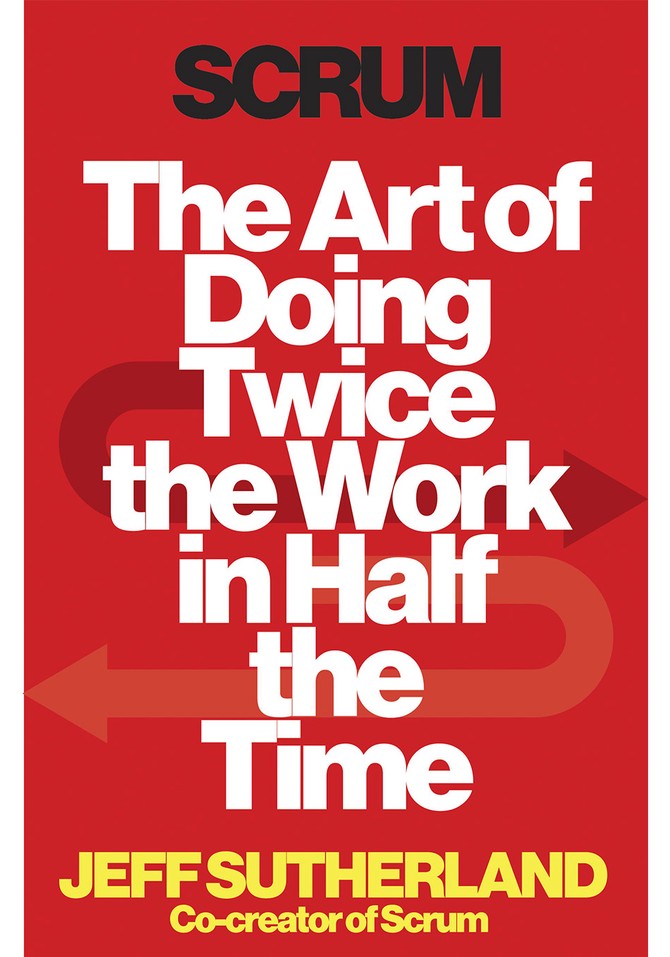
What You Want: To be more effective and more efficient.
What to Try: Multiple check ins. Whether you're organizing the PTA carnival, preparing a sales meeting presentation or making pottery at home: the same thing often happens, writes Jeff Sutherland, corporate coach and author of Scrum: The Art of Doing Twice the Work in Half the Time—we work very hard until we think we've got that project perfect, then present it to the public. This is why, he writes, "it takes so long and so much effort to do stuff, and why we're so bad at figuring out how long and how much effort things will take." Instead, whenever we start a project—be it an embroidered pillow or a 22-story skyscraper—we should use the following process: (1) Check in with others who like embroidered pillows or skyscrapers to "see if what you're doing is heading in the right direction, and if it's actually what people want"; (2) check in again once you've done a little more work with the same group to see if "there are any ways to improve how you're doing what you're doing, any way of doing it better and faster, and what might keep you from doing that." All this might sound like plain old ordinary feedback, but it's not. What you're asking for is very specific, very detailed responses—both about the quality of what you're making and the timeframe it can done in, the latter of which is often forgotten about. Think of it this way: If you make the most exquisite embroidered pillow in the world but it takes 37 years, did you succeed in making a gift for your mother's birthday?
What to Try: Multiple check ins. Whether you're organizing the PTA carnival, preparing a sales meeting presentation or making pottery at home: the same thing often happens, writes Jeff Sutherland, corporate coach and author of Scrum: The Art of Doing Twice the Work in Half the Time—we work very hard until we think we've got that project perfect, then present it to the public. This is why, he writes, "it takes so long and so much effort to do stuff, and why we're so bad at figuring out how long and how much effort things will take." Instead, whenever we start a project—be it an embroidered pillow or a 22-story skyscraper—we should use the following process: (1) Check in with others who like embroidered pillows or skyscrapers to "see if what you're doing is heading in the right direction, and if it's actually what people want"; (2) check in again once you've done a little more work with the same group to see if "there are any ways to improve how you're doing what you're doing, any way of doing it better and faster, and what might keep you from doing that." All this might sound like plain old ordinary feedback, but it's not. What you're asking for is very specific, very detailed responses—both about the quality of what you're making and the timeframe it can done in, the latter of which is often forgotten about. Think of it this way: If you make the most exquisite embroidered pillow in the world but it takes 37 years, did you succeed in making a gift for your mother's birthday?

What You Want: To move on from the past.
What to Try: A short writing exercise. "Your memoir will open doorways to yourself and the world," writes literary agent Sarah Jane Freymann and creative writing teacher Brenda Peterson in their new book Your Life Is a Book: How to Craft and Publish Your Memoir. The process of writing about your past can lead to a boost in self-acceptance, self-awareness and fulfillment. And while it's true that not all of us have time to finish a 200-page manuscript, filling in the answer to these three short exercises may help you face a difficult experience and recognize your own strengths, personal growth and—yes—wisdom.
I have survived__________because of my________.
It was not until my encounter with______that I understood______.
After my experiences with [loss, sickness, broken heart, abuse, betrayal], I finally "got it." I recognized that I learned most when I was_____________________.
What to Try: A short writing exercise. "Your memoir will open doorways to yourself and the world," writes literary agent Sarah Jane Freymann and creative writing teacher Brenda Peterson in their new book Your Life Is a Book: How to Craft and Publish Your Memoir. The process of writing about your past can lead to a boost in self-acceptance, self-awareness and fulfillment. And while it's true that not all of us have time to finish a 200-page manuscript, filling in the answer to these three short exercises may help you face a difficult experience and recognize your own strengths, personal growth and—yes—wisdom.
I have survived__________because of my________.
It was not until my encounter with______that I understood______.
After my experiences with [loss, sickness, broken heart, abuse, betrayal], I finally "got it." I recognized that I learned most when I was_____________________.
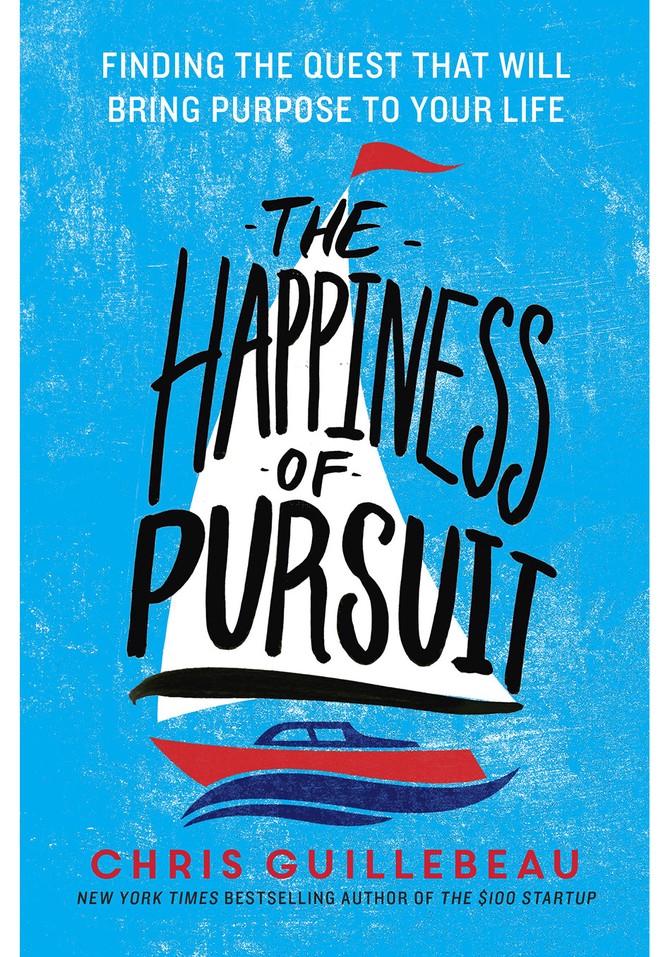
What You Want: To manage—and achieve—long-term goals.
What to Try: A yearly self-evaluation. We tend to overestimate what we can accomplish in a single day but underestimate what can happen in a year, writes Chris Guillebeau, author of The Happiness of Pursuit: Finding the Quest That Will Bring Purpose to Your Life. Guillebeau's personal quest was to travel to every country on the planet before the age of 35, which took him 10 years. To keep on track with his goal, he gave himself an annual review—a process not unlike the one you'd do with your boss to evaluate your duties and results. His annual review is very simple and made up of only two questions: "What went well this year?" and "What did not go well this year?" To try this yourself, answer each question with a list of different projects, ideas and activities you've attempted in the areas of work, health, spiritual growth or creative pursuits. Guillebeau then suggests you take one full week to figure out why certain items succeeded and others failed. Once you've identified obstacles that got in your way (which you can now avoid) and the factors that helped you thrive (which you can now repeat), you'll be better positioned to formulate this year's goals. For example, in Guillebeau's 2008 review he wrote, "At the end of 2009 I will have finished the manuscript for my first book..." Which became a best-seller known as The $100 Startup.
What to Try: A yearly self-evaluation. We tend to overestimate what we can accomplish in a single day but underestimate what can happen in a year, writes Chris Guillebeau, author of The Happiness of Pursuit: Finding the Quest That Will Bring Purpose to Your Life. Guillebeau's personal quest was to travel to every country on the planet before the age of 35, which took him 10 years. To keep on track with his goal, he gave himself an annual review—a process not unlike the one you'd do with your boss to evaluate your duties and results. His annual review is very simple and made up of only two questions: "What went well this year?" and "What did not go well this year?" To try this yourself, answer each question with a list of different projects, ideas and activities you've attempted in the areas of work, health, spiritual growth or creative pursuits. Guillebeau then suggests you take one full week to figure out why certain items succeeded and others failed. Once you've identified obstacles that got in your way (which you can now avoid) and the factors that helped you thrive (which you can now repeat), you'll be better positioned to formulate this year's goals. For example, in Guillebeau's 2008 review he wrote, "At the end of 2009 I will have finished the manuscript for my first book..." Which became a best-seller known as The $100 Startup.
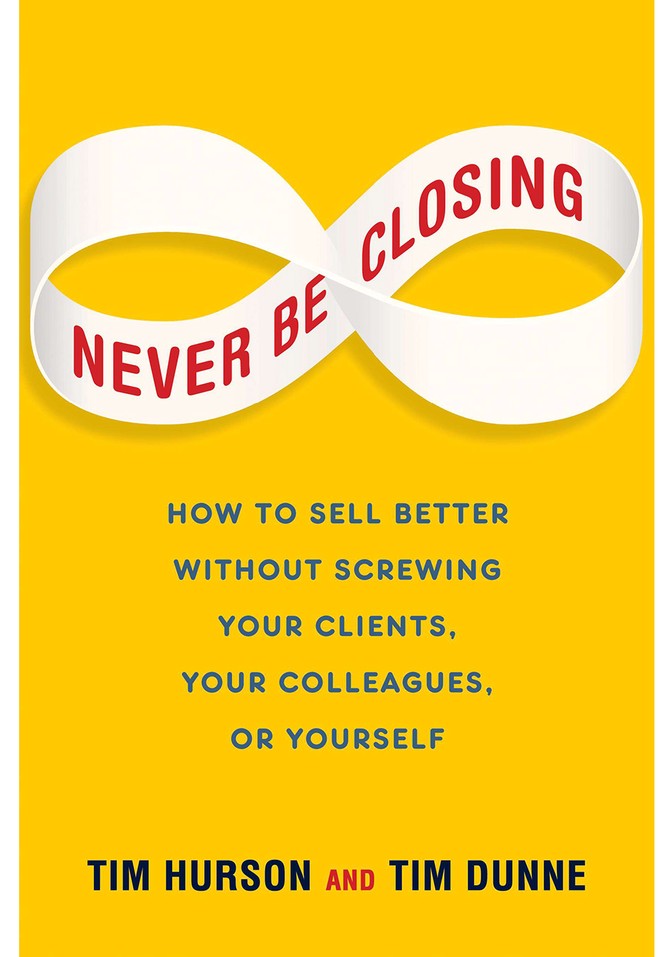
What You Want: To learn from your mistakes.
What to Try: Three quickie questions. Most of Tim Hurson and Tim Dunne's book Never Be Closing: How to Sell Better Without Screwing Your Clients, Your Colleagues, or Yourself is about how to create more intimate and successful business relationships. As part of that process, the two authors studied the work of famed psychologist David Kolb. "We learn most effectively," write Hurson and Dunne citing Kolb's research, "when we reflect on our experience, use these reflections to develop new ways of thinking and behaving, and then test these approaches in new situations." Their simplified advice could work for many of us in areas beyond work: After completing a project or undergoing an experience, ask yourself these three questions: "What?" "So what?" "Now what?" In other words, what did you do (or what happened)? What did it mean to you? And what would you do differently if you were to do it again? Repeat as needed.
What to Try: Three quickie questions. Most of Tim Hurson and Tim Dunne's book Never Be Closing: How to Sell Better Without Screwing Your Clients, Your Colleagues, or Yourself is about how to create more intimate and successful business relationships. As part of that process, the two authors studied the work of famed psychologist David Kolb. "We learn most effectively," write Hurson and Dunne citing Kolb's research, "when we reflect on our experience, use these reflections to develop new ways of thinking and behaving, and then test these approaches in new situations." Their simplified advice could work for many of us in areas beyond work: After completing a project or undergoing an experience, ask yourself these three questions: "What?" "So what?" "Now what?" In other words, what did you do (or what happened)? What did it mean to you? And what would you do differently if you were to do it again? Repeat as needed.
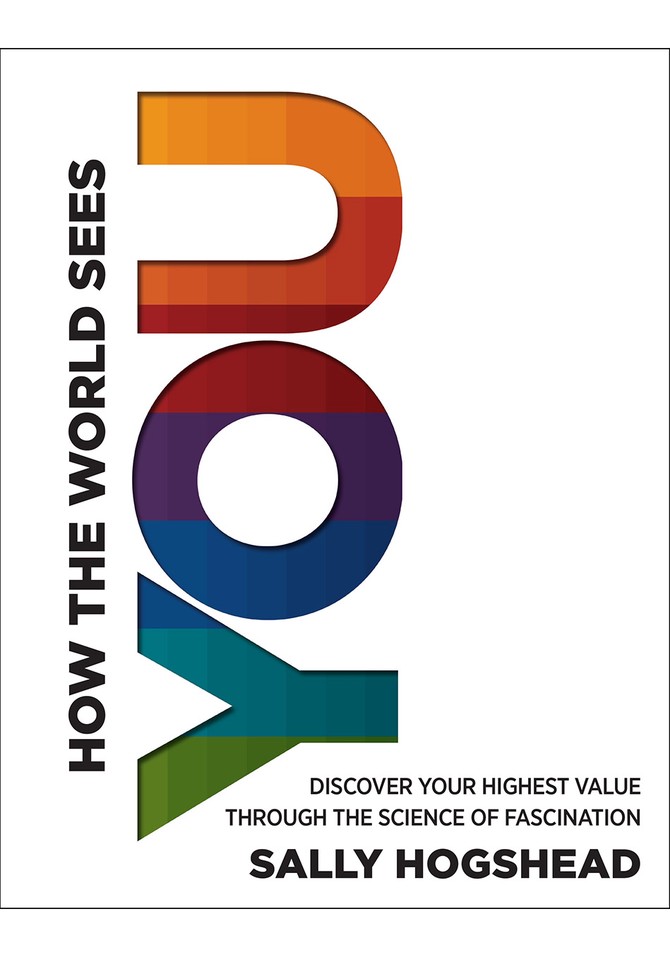
What You Want: To boost your confidence and charisma.
What to Try: Figure out what makes you different—and use it.
Sixty-one percent of us consider ourselves less fascinating than the average person, according to a study developed by marketing researcher Sally Hogshead, who compiled data on 250,000 people for her new book How the World Sees You. To put it bluntly, we just don't think we're all that interesting. And so, Hogshead says, other people don't, either. To change this, she writes, each of us must identify specifically how we add the most value to the world, whether that's our ability to nurture, inspire trust, lead with confidence, explain with passion, create, spot detail, listen or communicate. You don't have to have all these qualities, but if you want to connect more deeply with others, you do have to identify the ones that you have and use them to their greatest strength. Though the book takes you through a complex (and illuminating) multi-part test that identifies what you can bring out as your most natural and successful qualities and how—the first step begins with a few effective fill-in-the-adjective exercises:
"People can always count on me to be..."
"I can solve certain problems better than anyone else because I am..."
Why does this exercise work? Seeing yourself can be difficult; there's so much you in the way, after all. By imagining how others might describe you (ridiculously kind) and identifying your unique talents (an ability to repair home electronics with tin foil and dental floss) you can start to figure out what makes you different from others, then use that power to stand out—and shine.
What to Try: Figure out what makes you different—and use it.
Sixty-one percent of us consider ourselves less fascinating than the average person, according to a study developed by marketing researcher Sally Hogshead, who compiled data on 250,000 people for her new book How the World Sees You. To put it bluntly, we just don't think we're all that interesting. And so, Hogshead says, other people don't, either. To change this, she writes, each of us must identify specifically how we add the most value to the world, whether that's our ability to nurture, inspire trust, lead with confidence, explain with passion, create, spot detail, listen or communicate. You don't have to have all these qualities, but if you want to connect more deeply with others, you do have to identify the ones that you have and use them to their greatest strength. Though the book takes you through a complex (and illuminating) multi-part test that identifies what you can bring out as your most natural and successful qualities and how—the first step begins with a few effective fill-in-the-adjective exercises:
"People can always count on me to be..."
"I can solve certain problems better than anyone else because I am..."
Why does this exercise work? Seeing yourself can be difficult; there's so much you in the way, after all. By imagining how others might describe you (ridiculously kind) and identifying your unique talents (an ability to repair home electronics with tin foil and dental floss) you can start to figure out what makes you different from others, then use that power to stand out—and shine.

What You Want: To control your anger and be more peaceful.
What to Try: Identify your hidden rage.
Most of us don't know how angry we really are, writes Andrea Brandt, PhD, a psychologist and the author of Mindful Anger: A Pathway to Emotional Freedom. One of the most common problems, especially for women, is "substituting anxiety for anger." Anxiety is more socially acceptable, she writes, and so our rage gets transformed—without our knowing—into "jumpiness, racing thoughts, constant motion." Next time you're up at 2 a.m., worried about work or climate change, she advises in chapter one: Stop, breath and wait for the anger to rise inside you. You may even have to prompt yourself by asking, "I know there's nobody to blame here, but it there were, who would it be?" or, “What caused me to be so worried? Was there something that might have made me angry before I began to panic?" Once you identify your anger—the force of it may be surprising. The exercise allows you to name what it is that you need but are not getting—and to change things in order for you to get it (now).
What to Try: Identify your hidden rage.
Most of us don't know how angry we really are, writes Andrea Brandt, PhD, a psychologist and the author of Mindful Anger: A Pathway to Emotional Freedom. One of the most common problems, especially for women, is "substituting anxiety for anger." Anxiety is more socially acceptable, she writes, and so our rage gets transformed—without our knowing—into "jumpiness, racing thoughts, constant motion." Next time you're up at 2 a.m., worried about work or climate change, she advises in chapter one: Stop, breath and wait for the anger to rise inside you. You may even have to prompt yourself by asking, "I know there's nobody to blame here, but it there were, who would it be?" or, “What caused me to be so worried? Was there something that might have made me angry before I began to panic?" Once you identify your anger—the force of it may be surprising. The exercise allows you to name what it is that you need but are not getting—and to change things in order for you to get it (now).
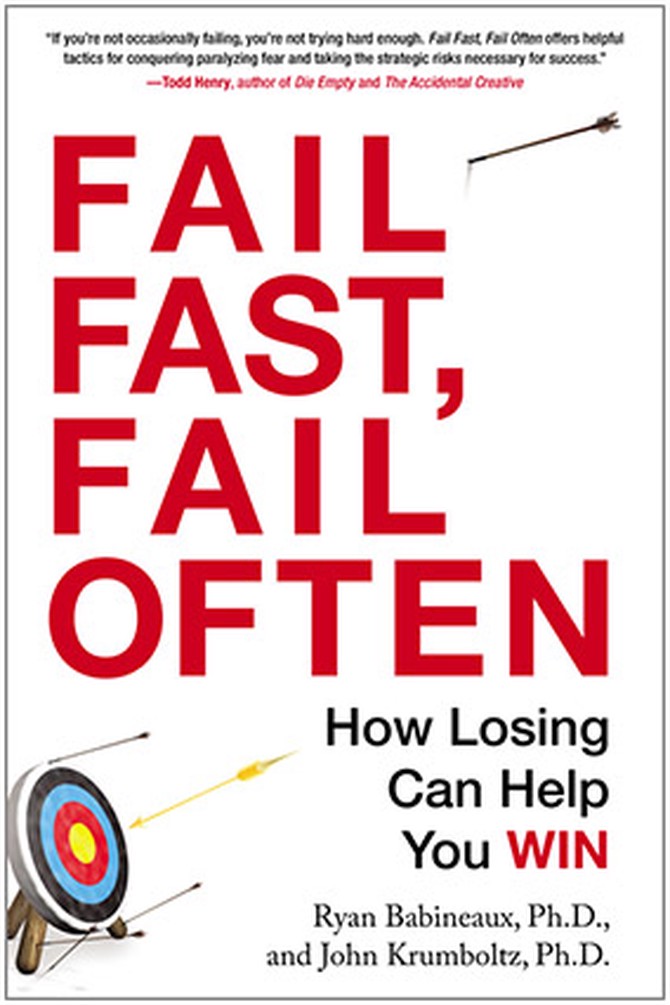
What You Want: To realize a dream or a passion project.
What to Try: Failing forward.
The problem with trying something new (like: photography) is that we approach it, hoping for instant success. Instead, write Ryan Babineaux PhD and John Krumboltz PhD in their new book, Fail Fast, Fail Often it helps us to bomb out over and over, each time using the experience to "fail forward." The co-creators of Stanford University's continuing studies course of the same name outline a specific process:
1. Find something that you'd like to try but haven't because you're afraid of splatting on your face. (Example: "I want take pictures for a living.")
2. Find a way to fail at it as quickly as possible. (For example, "I'm going to take pictures at my cousin's wedding next week.")
3. Do it and tell people you're new to this. (For example, "While I'm snapping away, I'll tell everybody I'm a beginner and ask what people think about the shots").
4. Go home and analyze ("What came naturally, and what do I need to work on? What was fun—and what wasn't?")
5. Set another challenge and fail again ("Next time, I'll take pictures at a wedding and get paid for it"). By the shifting your focus to learning something as a beginner (instead of, say, producing something amazing), write the authors, you will perform better, enjoy yourself more, find ways to learn from your stumbles—all of which leads you to succeed much more quickly.
What to Try: Failing forward.
The problem with trying something new (like: photography) is that we approach it, hoping for instant success. Instead, write Ryan Babineaux PhD and John Krumboltz PhD in their new book, Fail Fast, Fail Often it helps us to bomb out over and over, each time using the experience to "fail forward." The co-creators of Stanford University's continuing studies course of the same name outline a specific process:
1. Find something that you'd like to try but haven't because you're afraid of splatting on your face. (Example: "I want take pictures for a living.")
2. Find a way to fail at it as quickly as possible. (For example, "I'm going to take pictures at my cousin's wedding next week.")
3. Do it and tell people you're new to this. (For example, "While I'm snapping away, I'll tell everybody I'm a beginner and ask what people think about the shots").
4. Go home and analyze ("What came naturally, and what do I need to work on? What was fun—and what wasn't?")
5. Set another challenge and fail again ("Next time, I'll take pictures at a wedding and get paid for it"). By the shifting your focus to learning something as a beginner (instead of, say, producing something amazing), write the authors, you will perform better, enjoy yourself more, find ways to learn from your stumbles—all of which leads you to succeed much more quickly.
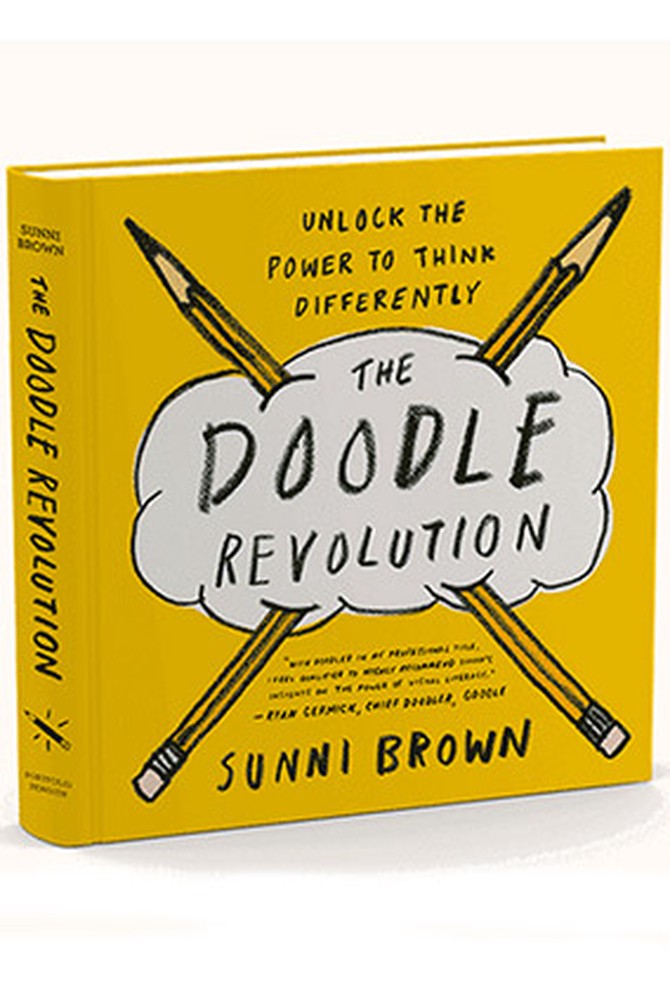
What You Want: To be more focused.
What to Try: Doodling.
The next time you're in a long meeting or conference, consider picking up a pen and drawing weird, flowery, scribbly thingamajigs on the edge of your agenda. Doodling, writes Sunni Brown, whose TED talk on the subject has been seen by more than 1.1 million people, can actually increase your ability to retain and remember information. As she describes in her book Doodle Revolution, when researchers at the University of Plymouth placed people on a monotonous phone call, some of them doodled, others didn't. Later, on a surprise memory test, the doodlers absorbed and recalled 29 percent more of the content than the nondoodlers. "Rather than diverting our attention away from a topic (what our culture believes is happening when people doodle)," says Brown, "doodling can serve as an anchoring task—a task that can occur simultaneously with another task—and act as a preemptive measure to keep us from losing focus on a boring topic."
What to Try: Doodling.
The next time you're in a long meeting or conference, consider picking up a pen and drawing weird, flowery, scribbly thingamajigs on the edge of your agenda. Doodling, writes Sunni Brown, whose TED talk on the subject has been seen by more than 1.1 million people, can actually increase your ability to retain and remember information. As she describes in her book Doodle Revolution, when researchers at the University of Plymouth placed people on a monotonous phone call, some of them doodled, others didn't. Later, on a surprise memory test, the doodlers absorbed and recalled 29 percent more of the content than the nondoodlers. "Rather than diverting our attention away from a topic (what our culture believes is happening when people doodle)," says Brown, "doodling can serve as an anchoring task—a task that can occur simultaneously with another task—and act as a preemptive measure to keep us from losing focus on a boring topic."
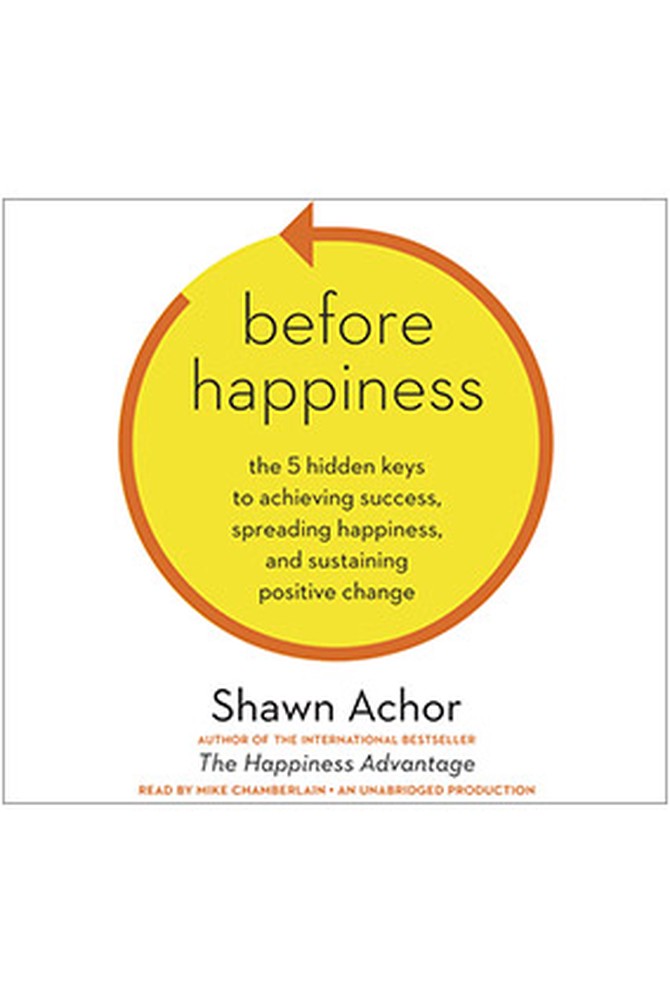
What You Want: To be more engaged and joyful about what you're doing.
What to Try: A happiness graph.
Meaning is what makes us happier (and usually more successful) in our professional and personal lives. And yet we don't always immediately recognize what is most meaningful to us—which is why Harvard researcher Shawn Achor's designed an experiment called the "happiness graph. How to do it: Think about the last year, then sketch a line graph with two axes, the vertical one for happiness and the horizontal one for time. "So, if you got a promotion in January, and that made you happy, that should be a high point on the graph," he writes in Before Happiness: The 5 Hidden Keys to Achieving Success, Spreading Happiness, and Sustaining Positive Change. "Or, if you were miserable in January but then in early February your football team won the Super Bowl, you'd draw a spike," and so on, all the way through December. Then, label the events that determined your highs and lows.
"The events you include can uncover important yet hidden nodes of meaning in your life," writes Achor. Some people's happiness fluctuates around family events, others around world events, still others around work events. "Whatever our individual graphs look like, they help us understand what parts of our lives our happiness (or conversely, our unhappiness) depends on." The question then becomes: Are you spending your time on your points of highest meaning? And if not, how can you change things in your life to let you focus more on those?
What to Try: A happiness graph.
Meaning is what makes us happier (and usually more successful) in our professional and personal lives. And yet we don't always immediately recognize what is most meaningful to us—which is why Harvard researcher Shawn Achor's designed an experiment called the "happiness graph. How to do it: Think about the last year, then sketch a line graph with two axes, the vertical one for happiness and the horizontal one for time. "So, if you got a promotion in January, and that made you happy, that should be a high point on the graph," he writes in Before Happiness: The 5 Hidden Keys to Achieving Success, Spreading Happiness, and Sustaining Positive Change. "Or, if you were miserable in January but then in early February your football team won the Super Bowl, you'd draw a spike," and so on, all the way through December. Then, label the events that determined your highs and lows.
"The events you include can uncover important yet hidden nodes of meaning in your life," writes Achor. Some people's happiness fluctuates around family events, others around world events, still others around work events. "Whatever our individual graphs look like, they help us understand what parts of our lives our happiness (or conversely, our unhappiness) depends on." The question then becomes: Are you spending your time on your points of highest meaning? And if not, how can you change things in your life to let you focus more on those?
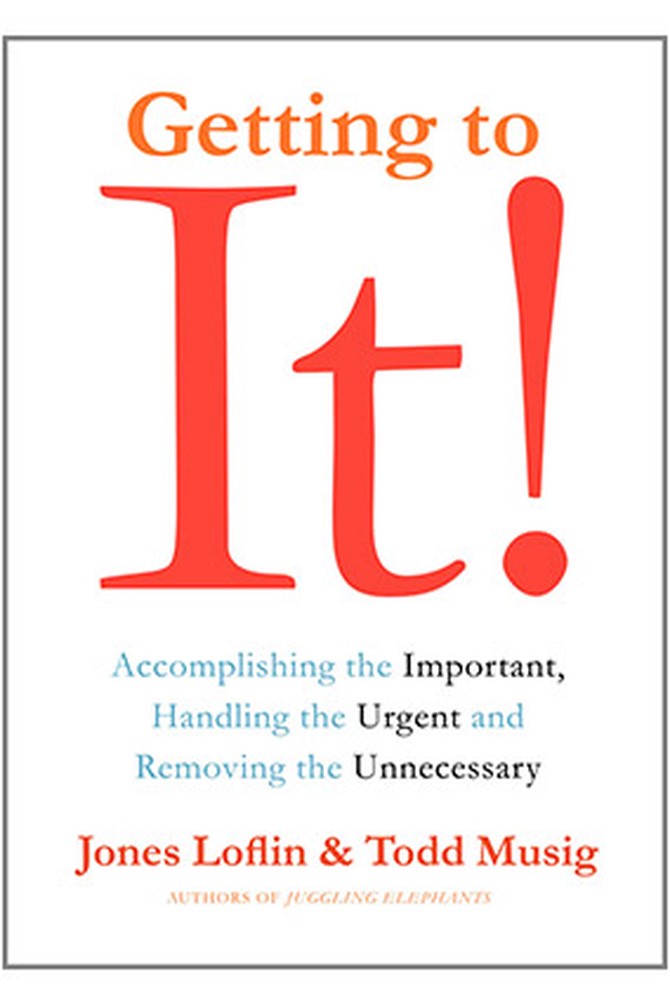
What You Want: To have more free time and less stress.
What to Try: Make a paid-to-do list.
Step 1: Make a list of everything you do at work, write corporate trainers Jones Loflin and Todd Musig, who train Fortune 500 companies in time management and work-life balance. (If you are the director of a candy factory, for example, you might write down: monitor chocolate and butterscotch makers, advise the wrapping designer, plan factory expansion, make sure the tasters don't taste too enthusiastically). As the two describe in Getting to It: Accomplishing the Important, Handling the Urgent, and Removing the Unnecessary, their clients typically start the list with their current workload, then mention other upcoming activities, then lastly remember "all the smaller tasks that dot their plates like peas." After listening to their clients' frustrations for a short while, Loflin and Musig then ask them, "What are you paid to do?" In that moment, the clients usually realize how much of their day is spent on problems they inherited, tasks no one else wants to (or can) do and putting out minor (but avoidable) fireballs.
Step 2: "Dust off your job description," the two write, "and review your most recent evaluation." Make another list of the four or five things you're paid to do. If you give those your full attention, your performance on other to-dos may not matter as much. You'll do better at what your boss needs you most for. P.S. "This strategy," the two write, "also applies to the other roles in your life. What are the three or four things you can do as a parent, neighbor, volunteer, baseball coach, Sunday-school teacher, gardener, son-in-law, dancer, and so on, that make the greatest impact? Three or four key things are doable. Ten or 12 can be overwhelming."
What to Try: Make a paid-to-do list.
Step 1: Make a list of everything you do at work, write corporate trainers Jones Loflin and Todd Musig, who train Fortune 500 companies in time management and work-life balance. (If you are the director of a candy factory, for example, you might write down: monitor chocolate and butterscotch makers, advise the wrapping designer, plan factory expansion, make sure the tasters don't taste too enthusiastically). As the two describe in Getting to It: Accomplishing the Important, Handling the Urgent, and Removing the Unnecessary, their clients typically start the list with their current workload, then mention other upcoming activities, then lastly remember "all the smaller tasks that dot their plates like peas." After listening to their clients' frustrations for a short while, Loflin and Musig then ask them, "What are you paid to do?" In that moment, the clients usually realize how much of their day is spent on problems they inherited, tasks no one else wants to (or can) do and putting out minor (but avoidable) fireballs.
Step 2: "Dust off your job description," the two write, "and review your most recent evaluation." Make another list of the four or five things you're paid to do. If you give those your full attention, your performance on other to-dos may not matter as much. You'll do better at what your boss needs you most for. P.S. "This strategy," the two write, "also applies to the other roles in your life. What are the three or four things you can do as a parent, neighbor, volunteer, baseball coach, Sunday-school teacher, gardener, son-in-law, dancer, and so on, that make the greatest impact? Three or four key things are doable. Ten or 12 can be overwhelming."
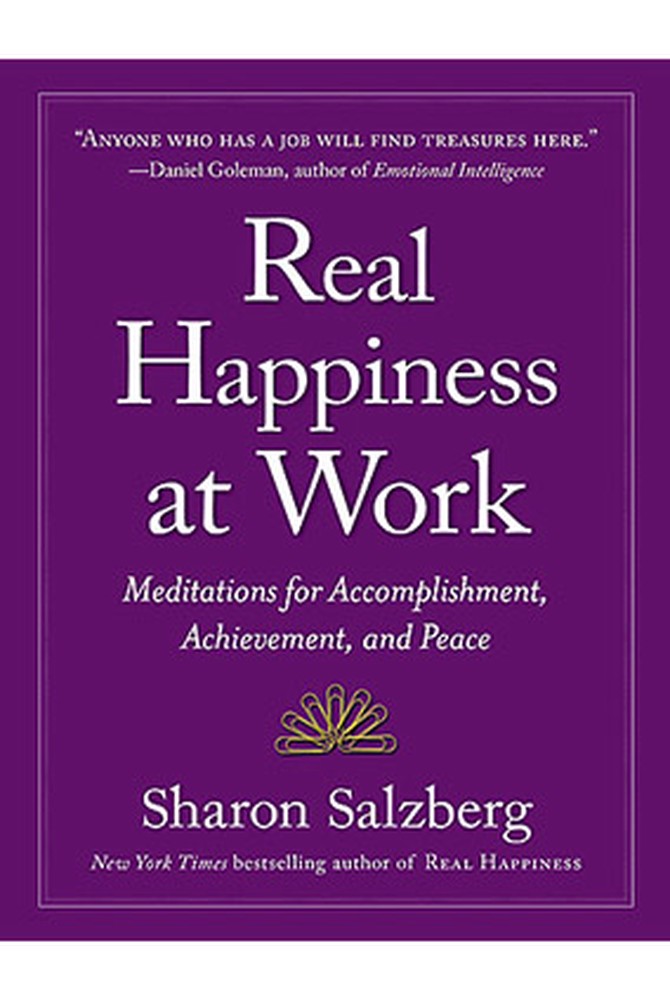
What You Want: To get control of your rage.
What to Try: Recognize anger (instead of what's making you angry).
"Let's say a rush of intense anger overtakes you," writes meditation teacher Sharon Salzberg. Normally, as she explains in Real Happiness at Work: Meditations for Accomplishment, Achievement, and Peace, we think about the person or thing that made us mad (for example, "They did this, so I'm going to do that and my vengeful act will destroy them!") or we beat ourselves up (for example, "I'm such a terrible person, I'm so awful. I can't believe I'm so angry. I've been in therapy for 10 years. How could I still be angry?") But what if you could take human beings out of the equation? What if the first thing you said was, "Oh...this is anger." Identifying the feeling allows you to look at the anger (not you or the other person) and, as Salzberg writes, this decreases its power to take over our minds since we stop being busy reacting. What we notice, she adds, is that anger is not just one thing; it is made up of moments of sadness, moments of fear, moments of frustration, moments of panic. Understanding that it is many different things also allows for many different ways to end it.
What to Try: Recognize anger (instead of what's making you angry).
"Let's say a rush of intense anger overtakes you," writes meditation teacher Sharon Salzberg. Normally, as she explains in Real Happiness at Work: Meditations for Accomplishment, Achievement, and Peace, we think about the person or thing that made us mad (for example, "They did this, so I'm going to do that and my vengeful act will destroy them!") or we beat ourselves up (for example, "I'm such a terrible person, I'm so awful. I can't believe I'm so angry. I've been in therapy for 10 years. How could I still be angry?") But what if you could take human beings out of the equation? What if the first thing you said was, "Oh...this is anger." Identifying the feeling allows you to look at the anger (not you or the other person) and, as Salzberg writes, this decreases its power to take over our minds since we stop being busy reacting. What we notice, she adds, is that anger is not just one thing; it is made up of moments of sadness, moments of fear, moments of frustration, moments of panic. Understanding that it is many different things also allows for many different ways to end it.
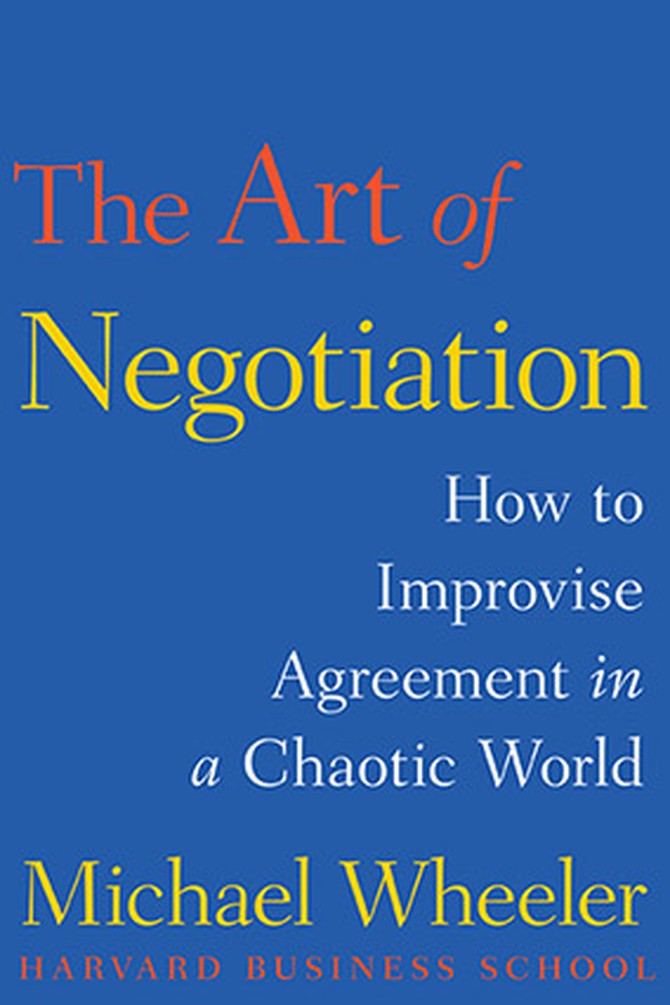
What You Want: To negotiate better.
What to Try: Flashing forward.
When we're trying to work a deal—be it with a contractor redoing the house or a neighbor who wants to split a new power mower—we usually think of what might go wrong. We may even name a few ideas (such as, the contractor might go overbudget or the neighbor might forget to fill up the mower with gas). But that is not enough, writes Harvard Business School professor Michael Wheeler in The Art of Negotiation: How to Improvise Agreement in a Chaotic World.
Instead, pretend the negotiation has started. Now imagine there's been a major problem. Ask yourself, "What will it be?"(maybe the contractor wants to install a $700 toilet instead of a $100 one, for example). Rather than having a fuzzy idea of something that might go south, you're now assuming something will, which fosters "an attitude of watchfulness, so you'll be quicker to see if/when the process is going awry. If you're alert, you may be able to put it back on track. If not, you'll have a plan B."
Now flash forward again. This time imagine that there's been some sort of wonderful surprise in your talks. What is it? "Studies show that negotiators who set lofty goals get better deals," writes Wheeler, who also edits the Negotiation Journal at Harvard Law School. "Instead of contenting themselves with outcomes they can live with, these negotiators focus instead on how much the other party might be prepared to grant. In addition, imagining upside scenarios prepares you to recognize opportunities and find creative solutions."
What to Try: Flashing forward.
When we're trying to work a deal—be it with a contractor redoing the house or a neighbor who wants to split a new power mower—we usually think of what might go wrong. We may even name a few ideas (such as, the contractor might go overbudget or the neighbor might forget to fill up the mower with gas). But that is not enough, writes Harvard Business School professor Michael Wheeler in The Art of Negotiation: How to Improvise Agreement in a Chaotic World.
Instead, pretend the negotiation has started. Now imagine there's been a major problem. Ask yourself, "What will it be?"(maybe the contractor wants to install a $700 toilet instead of a $100 one, for example). Rather than having a fuzzy idea of something that might go south, you're now assuming something will, which fosters "an attitude of watchfulness, so you'll be quicker to see if/when the process is going awry. If you're alert, you may be able to put it back on track. If not, you'll have a plan B."
Now flash forward again. This time imagine that there's been some sort of wonderful surprise in your talks. What is it? "Studies show that negotiators who set lofty goals get better deals," writes Wheeler, who also edits the Negotiation Journal at Harvard Law School. "Instead of contenting themselves with outcomes they can live with, these negotiators focus instead on how much the other party might be prepared to grant. In addition, imagining upside scenarios prepares you to recognize opportunities and find creative solutions."
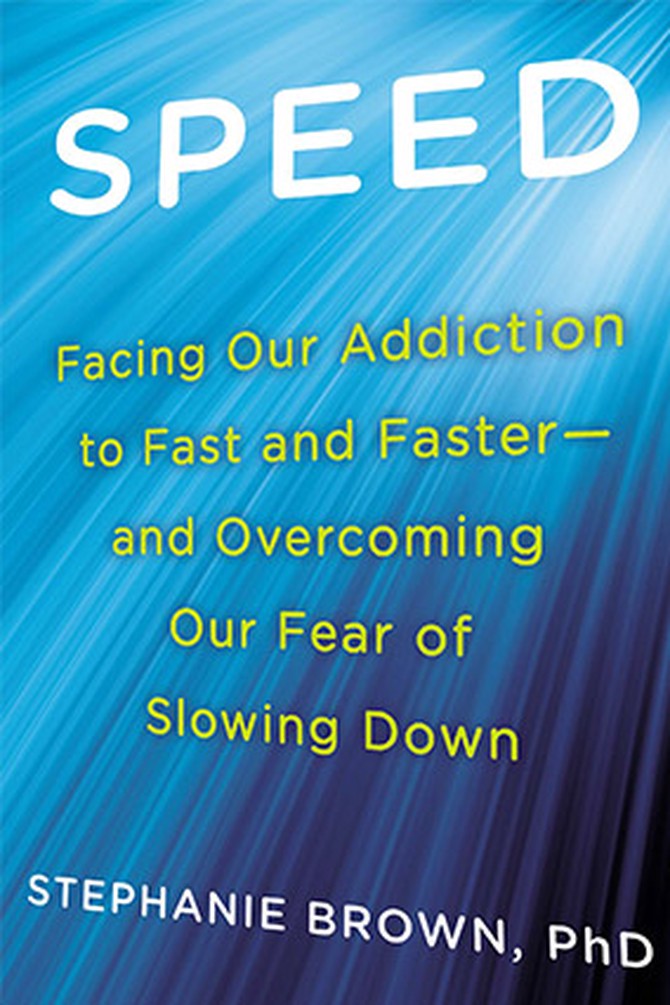
What You Want: To stop the racing, live at a more comfortable pace
What to Try: Creating a tech "mudroom"
The breakneck pace at which we move today has become as seductive as alcohol or drugs, writes addiction specialist and psychologist, Stephanie Brown, PhD, in Speed: Facing our Addiction to Fast and Faster and Overcoming Our Fear of Slowing Down, not to mention it sucks us into stress levels that can impair our immune systems and "even rewire the brain, leaving us more vulnerable to anxiety and depression." Her favorite solution, which she borrowed from a client who grew up in Oregon where families leave wet boots in a mudroom by the front door: Create a space by your entrance where everyone places their cell phone, tablets and laptops before coming inside. Then set up tech-permissible times (say, after homework but before dinner) and tech-free times (say, Sunday nights). Watch what happens, including the sentences that result without one embarrassing auto correction.
Next: Self-help advice you haven't heard before
What to Try: Creating a tech "mudroom"
The breakneck pace at which we move today has become as seductive as alcohol or drugs, writes addiction specialist and psychologist, Stephanie Brown, PhD, in Speed: Facing our Addiction to Fast and Faster and Overcoming Our Fear of Slowing Down, not to mention it sucks us into stress levels that can impair our immune systems and "even rewire the brain, leaving us more vulnerable to anxiety and depression." Her favorite solution, which she borrowed from a client who grew up in Oregon where families leave wet boots in a mudroom by the front door: Create a space by your entrance where everyone places their cell phone, tablets and laptops before coming inside. Then set up tech-permissible times (say, after homework but before dinner) and tech-free times (say, Sunday nights). Watch what happens, including the sentences that result without one embarrassing auto correction.
Next: Self-help advice you haven't heard before
Published 09/29/2014

